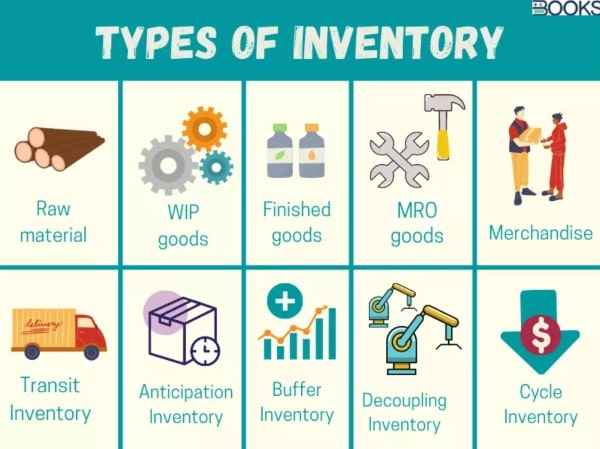In this article, we explore exactly what inventory items are and their different types. We will also share our 8 step process to manage inventory items effectively. Read on to learn more.

Inventory items are goods and materials a business holds for resale, production, or service delivery. These include raw materials, work-in-progress, and finished goods which are essential assets for businesses as it is easily converted into cash or used in operations to generate revenue.
Example: Inventory items at a tech store include 50 iPhone 13s, 75 Samsung Galaxy S22s, and 40 Dell XPS 15 laptops which are ready for sale.

There are several types of inventory items, some of the common categories include:
Raw materials are the unprocessed, base materials that are used to manufacture finished products. They're essential in the production process and are transformed into finished goods.
Example: Cotton used in a textile factory to make clothing.
Work-in-progress inventory consists of partially completed products that are still in the production process. WIP items are not ready for sale and are in various stages of completion.
Example: Cars on an assembly line that are only partially assembled.
Finished goods are completed products that are ready for sale to customers. These items have undergone the entire production process and are ready to be distributed.
Example: Smartphones displayed on the shelves of an electronics retail store.
MRO inventory includes items used to support and maintain the production process and facility operations but isn't part of the final product. These items aid in maintaining the equipment and infrastructure.
Example: A set of tools and lubricants used to maintain machinery in a factory.
Safety stock is the additional inventory kept on hand to prevent stockouts caused by unexpected demand spikes or supply chain disruptions. It acts as a buffer against unforeseen variations in supply and demand.
Example: Extra bottles of a popular soda kept in storage during a festive season.
Cycle stock is the inventory that's regularly depleted and replenished as a part of normal business operations. It fluctuates based on the regular demand and supply patterns.
Example: Daily shipments of fresh bread to restock grocery store shelves.
Seasonal inventory comprises additional items stocked to meet increased demand during specific seasons or periods. It’s especially common in industries affected by seasonality.
Example: Extra swimsuits ordered by a retail store in preparation for the summer season.
Dead stock refers to items that have never been sold or used and are no longer in demand which is often due to obsolescence or changes in consumer preferences. These items can be a drag on a company's financials as they tie up capital without generating revenue.
Example: Outdated model smartphones collecting dust in the storage room.

Use our 8 step process to manage your inventory items effectively. Simply follow the steps below:
Determine the types and quantities of inventory items required to meet customer demand while minimizing excess stock. This step involves forecasting demand, considering lead times, and deciding on reorder levels.
Example: A retailer predicts the sale of 200 pairs of Nike sneakers monthly based on past sales data. They ensure a minimum of 50 pairs is always in stock to meet immediate customer demand.
Identify and build relationships with reliable suppliers to ensure consistent, timely, and quality supply of inventory items. Evaluate suppliers based on cost, quality, reliability, and terms of service.
Example: A computer store establishes a contract with Apple to receive 30 MacBook Pros every month. The contract includes terms for expedited orders if demand unexpectedly increases.
Implement a system to track inventory levels, sales, orders, and deliveries. This could be a manual system, spreadsheet, or specialized inventory management software to automate and optimize the process.
Example: A grocery store uses software that automatically tracks the sale of products, like 500 gallons of milk weekly, and alerts managers when stock levels fall below the set minimum.
Design the storage or warehouse layout to facilitate efficient handling, storage, and retrieval of inventory items. Ensure that items are easily accessible to minimize the time spent on restocking and order fulfillment.
Example: A warehouse is organized to have fast-moving products like 1000 cartons of a popular cereal brand easily accessible. Slow-moving items are stored in less prime locations.
Educate the staff on inventory management procedures including receiving, handling, and selling inventory. The well-trained staff ensures accurate records, reduced errors, and better customer service.
Example: Retail employees are trained to update the system immediately after selling 10 units of Samsung Galaxy S25. This ensures real-time tracking and accurate inventory levels.
Regularly check physical inventory against recorded levels to identify discrepancies, theft, or damage. Audits can be done through cycle counting, partial audits, or complete audits.
Example: A toy store counts its stock of 500 LEGO sets monthly and compares it to the sales records. Any discrepancies prompt a review of the inventory tracking process.
Determine the optimal levels of safety stock to act as a buffer against unexpected demand or supply chain disruptions. Keep a balance between carrying costs and the risk of stockouts.
Example: An electronics retailer keeps an extra 20 PlayStation 5 consoles as safety stock. This ensures availability even if there’s a sudden spike in demand or supply delays.
Regularly analyze inventory data to identify trends, inefficiencies, and opportunities for improvement. Adjust the inventory management strategies based on the analysis to optimize performance.
Example: After noticing a consistent increase in the sale of 300 wireless headphones monthly, a store manager decides to adjust reorder levels and safety stock to cater to the rising demand.

Gourmet Delight is a gourmet grocery store that aims to optimize its stock levels and enhance operational efficiency. Here’s how the company implemented our simple 8 step process:
Gourmet Delight uses past sales data to estimate a need for 250 bottles of Italian Olive Oil per month. They use this information to maintain a minimum of 60 bottles in stock and ensure that the daily sale of 8 bottles can be met without running out.
The store collaborates with "Mediterranean Flavors" by ordering 70 bottles weekly to maintain stock. The established rapport ensures a two-day delivery guarantee which ensures that Gourmet Delight's inventory is consistently replenished.
A real-time inventory management system at Gourmet Delight alerts the manager to reorder when the Italian Olive Oil stock drops to 20 bottles. This automated alert system ensures timely reordering to keep the inventory well-stocked and meet customer demand efficiently.
Gourmet Delight’s store layout is designed with a dedicated section displaying 30 bottles of the popular Italian Olive Oil. The back storage is systematically organized to facilitate quick restocking of the display to ensure that customers always find the product available.
The store’s staff are adept at using the inventory system and instantly recording every sale. They’re trained to restock the shelves from the systematically organized back storage when only 10 bottles are left on display to guarantee product availability at all times.
Through monthly audits, any discrepancies between the physical and recorded stock are identified and addressed. For instance, if an audit reveals 50 bottles in stock against a recorded 55, an investigation is initiated to identify and resolve the discrepancy.
Gourmet Delight maintains an additional 15 bottles of Italian Olive Oil as safety stock. This practice ensures that customers continue to find the product on shelves even during unexpected demand surges or delays in the delivery of fresh stock.
Sales and inventory data are continuously analyzed to enable dynamic adjustments to stock levels. Noticing a 20% sales increase of Italian Olive Oil during the holiday season, Gourmet Delight adjusts its safety stock and reorder levels to meet the heightened demand and avoid overstocking.
We hope that you now have a better understanding of what inventory items are and how to effectively manage your inventory items.
If you enjoyed this article, you might also like our article on inventory fulfillment or our article on the finished goods inventory formula.